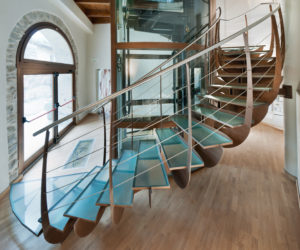
CPSC issues letter to state governors on residential elevators
The U.S. Consumer Product Safety Commission (CPSC) joined the Accessibility Equipment Manufacturers Association and the National Association of Elevator Contractors in warning consumers with home elevators and visitors to homes with elevators to protect small children from a deadly gap that may exist between the doors. The distance between the inner elevator car door and the room access door (hoistway door) on home elevators may be too wide, allowing a small child to enter the space and close the room access door without opening the elevator car door. If this happens, the child can be seriously injured or killed when the elevator moves.
Residential elevators are commonly found in multi-level homes, townhomes, vacation homes and rentals, and in large homes that have been converted to inns or bed-and-breakfast hotels. The CPSC is aware of a total of nine tragic incidents associated with this product — including five fatalities involving entrapments between car and hoistway doors of residential elevators and a sixth where a toddler was trapped beneath the elevator — leading to death, serious fractures, traumatic asphyxia, and lifelong injuries. The Commission is urging consumers to have a qualified elevator inspector examine their home elevator for this dangerous gap and other potential safety hazards, inspecting to the latest relevant safety standard, ASME A17.1-2016, Safety Code for Elevators and Escalators.
The current version of ASME A17.1-2016 standard — included in the 2018 International Residential Code — limits the space between the car door and hoistway door to less than four inches. When reviewing a petition for a federal standard in 2017, the Commission concluded that the four-inch standard would adequately address the risk of injury and would be widely complied with. However, more recent information indicates that some states have not updated building codes to incorporate the 2016 standard, and other states are not inspecting residential elevator installations to ensure that the relevant standard is being adhered to.







